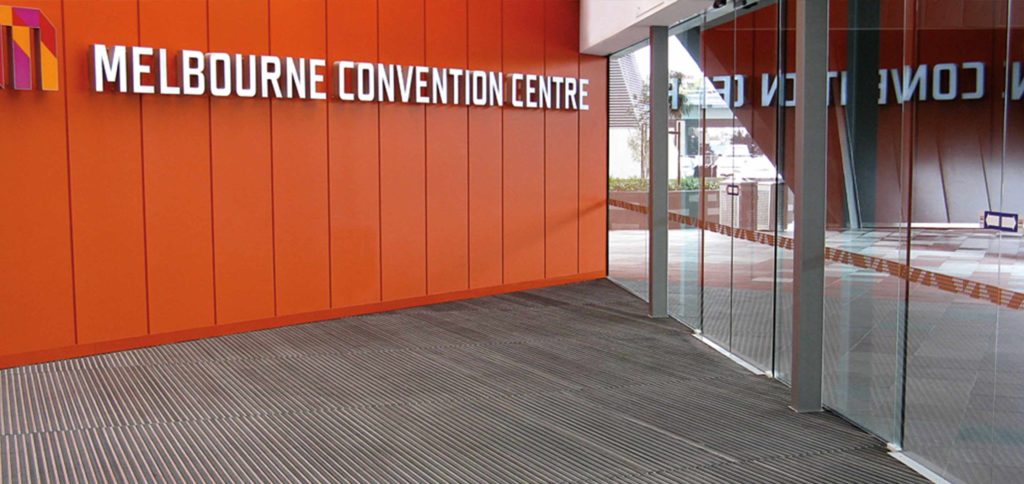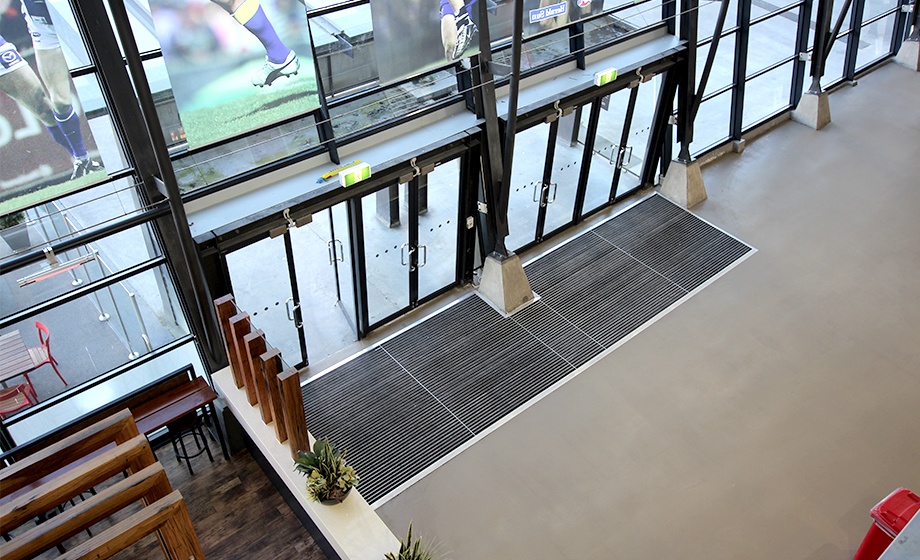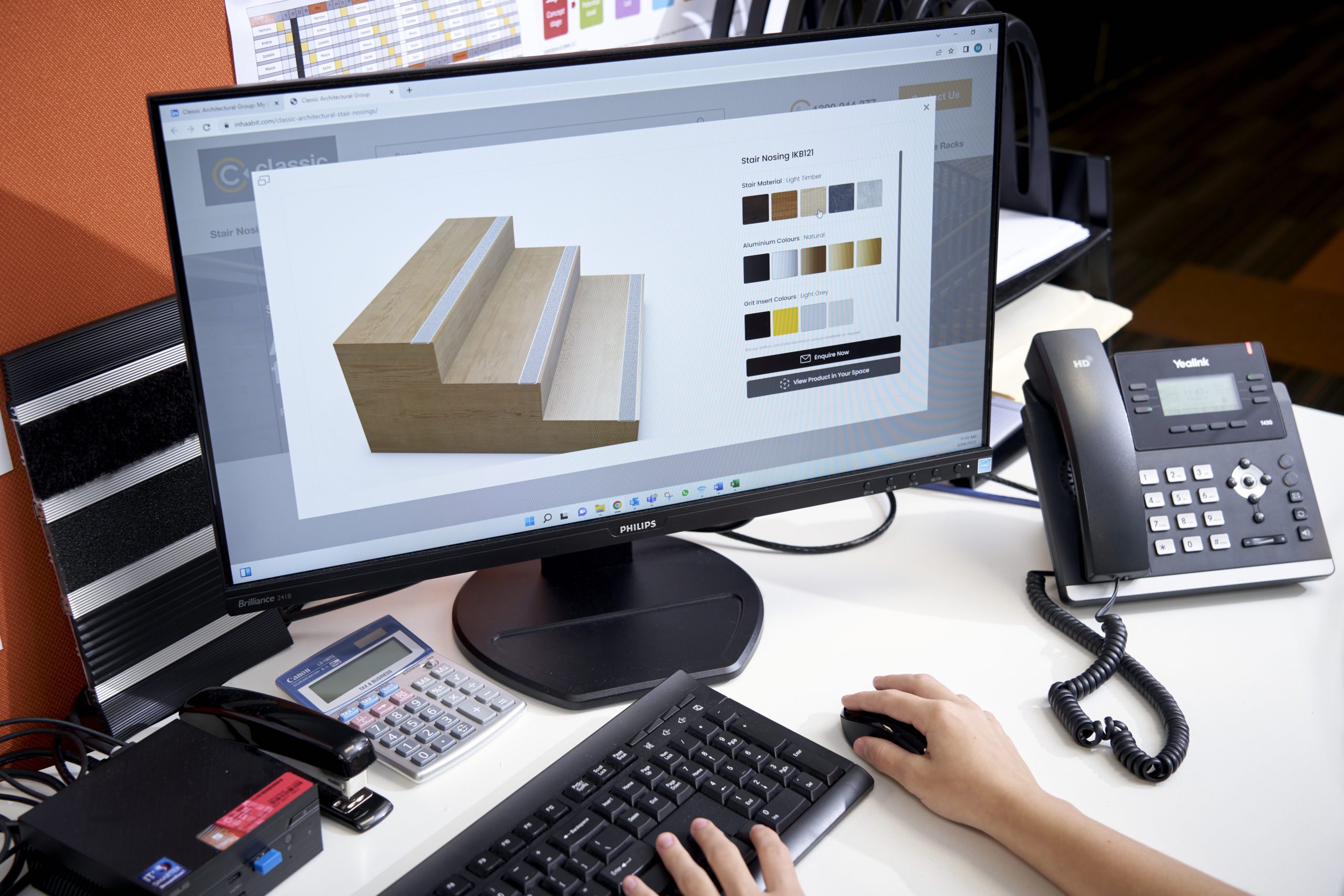Invest in premium entrance matting for high-traffic areas. Ensure floor safety while maintaining your building’s presentation.
Entrance matting is a key floor safety investment for any commercial project. Creating cleaner, safer entrance areas while upholding your building’s presentation and longevity, entrance mats help foster a healthy environment for your visitors.
Unlike residential entrance mats or standard doormats, commercial entrance mats are specifically engineered to provide a slip-resistant surface for foot and wheeled access within high-traffic environments. You’ll often find them installed at common entry points such as doorways, foyers, and walkways. In addition to this, entrance mats also trap first, debris and moisture, ensuring that your floors stay clean despite high footfall.
Offering heavy-duty, industrial durability, your commercial entrance matting can be architecturally designed to complement your building’s decor for a seamless look and feel. To learn more about the different types of commercial door matting and their benefits, we have dedicated an entire article to ‘Explained: Commercial Entrance Mats’. In this blog, we’ll be answering the most frequently asked questions to help you choose the right entrance matting for your high-traffic entryway.
We’ve answered the most popular FAQs about commercial entrance mats.
Q: Which entrance matting material is best for outdoor use?
Outdoor entrance matting needs to be able to withstand various climatic conditions, such as rain and heat. The type of ‘typical’ footwear that will pass over also needs to be considered. You also need to consider wheelchairs and luggage that might cross the entryway.
Outdoor entrance matting needs to have good scraper properties to remove any heavy soil from footwear. Open construction entrance matting also enables debris to fall through, leaving the surface free of slipping hazards.
Certain materials, such as rubber and polypropylene fibres (needlepunch), are more durable than others in external environments as they are less water-absorbent.
Q: What type of entry matting is best for indoors?
Indoor entrance matting needs to be tough and durable, further supporting exterior matting’s efforts. Where there may not be any external entrance matting, this mat then needs to perform well to remove the most damaging debris like soil and grit, while capturing moisture and fine dust.
With their quick-drying properties, certain materials, such as nylon fibres, are a good choice for indoor applications. Others may also offer resistance to crushing, so we always recommend referring to a product’s specifications for more details. Indoor entry matting can also be customised to match your building’s interior design and look.
Q: Do you need both an indoor and outdoor entrance mat?
When considering entrance matting, we always recommend a zoning system. Creating three zones delivers optimum dirt barrier performance, ensuring interior floors are kept clean and hazard-free.
Zone 1 – Exterior Entrance Matting
Outdoor entrance matting needs to be fit for purpose, handling various climatic conditions such as rain and heat. This mat needs to have good scraper properties to remove any heavy soil from footwear before entering the building.
Product Highlight: Classic Architectural Group’s Link Scrape is a commercial entrance mat suited to outdoor use and high-traffic areas. It is durable, hard-wearing, heel-proof and wheelchair-friendly.
Zone 2 – Primary Interior Entrance Matting
Interior entrance matting needs to be tough and durable to continue the job from the exterior matting, by removing the most damaging debris like soil, grit and moisture.
Product Highlight: The Vantt 5500 is a heavy-duty, interior-use entrance mat for commercial spaces. Choose Australia’s only Global GreenTag™ GreenRate™ Level A Certified entrance matting.
Zone 3 – Secondary Interior Entrance Matting
Secondary interior entrance matting is essential for final drying and dust removal. If a client’s budget is limited and will not allow for a zoning system, we would recommend going for the primary interior entrance matting as a minimum.
Product Highlight: If you’re considering secondary interior entrance matting, the Integra Zoit is an excellent carpet matting option. It offers a dirt and moisture barrier and is suitable for interior use. The Zoit has high water absorption, fungal and bacterial growth resistance and non-allergenic properties, all essential features for interior entrance matting.
Q: Does entrance matting need underlay?
No, entrance matting generally does not need an underlay. However, it is crucial that the entrance matting is installed on a well-prepared substrate. This includes making sure it is perfectly clean, flat and level. For some mats, a poor substrate will mean the mat will not be properly supported which might result in a ‘bounce’ or be noisy underfoot.
Q: How do I install recessed matting?
Many commercial entrance matting systems, such as aluminium matting, are designed to be installed in recessed mat wells. A properly prepared mat well suited to the correct depth of the matting will complement the building’s entrance without restricting disabled access. Read our blog on entrance matting wells for more information.
In the absence of a recessed mat well, ramped edging should be used to prevent trip hazards. Any ramped edging needs to comply with both the requirements of the AS1428 and the DDA. It should be of a compliant gradient to not restrict disabled access in any way.
Q: How long should the entrance matting be?
Length is one of the most important elements to consider when choosing entrance matting. People often don’t stop to wipe their feet when entering public buildings. So there needs to be enough matting to trap maximum moisture and debris as people walk in. A minimum of about six footsteps is recommended.
The length of matting required is also dependent on the amount of daily footfall and as a guide, our team suggests:
- Low (less than 80 people per hour) = a minimum of 3-4 metres
- Medium (up to 400 people per hour) = a minimum of 6-7 metres
- High (around 800 people per hour) = a minimum of 8-12 metres
- Heavy Duty (around 2,000 people per day) = a minimum of 9-12 metres
Get a step ahead today!
Choosing the right entrance matting system for your project can play a huge role in lowering your building’s cleaning and maintenance costs by reducing unsightly dirt marks, scratches, stains, and everyday wear and tear on your flooring. Classic’s Integra commercial matting range offers high performance without compromising on aesthetics, ensuring you get maximum value from your investment.

With over 40 years’ experience in public access and safety solutions across commercial and residential properties, Classic’s the name you can trust. We provide stair nosings, tactile indicators, bike racks, and car park safety systems. Offering you the certainty of end-to-end support, from consultation and design right through to manufacturing, supply, and installation, we’ll keep your project on track.
To browse our entire range of solutions, view our latest product catalogue. You can download a copy online or we can send you a physical copy in the mail. If you’d like to learn more about our entrance mat offerings and services, speak with an expert by calling 1300 244 377.



